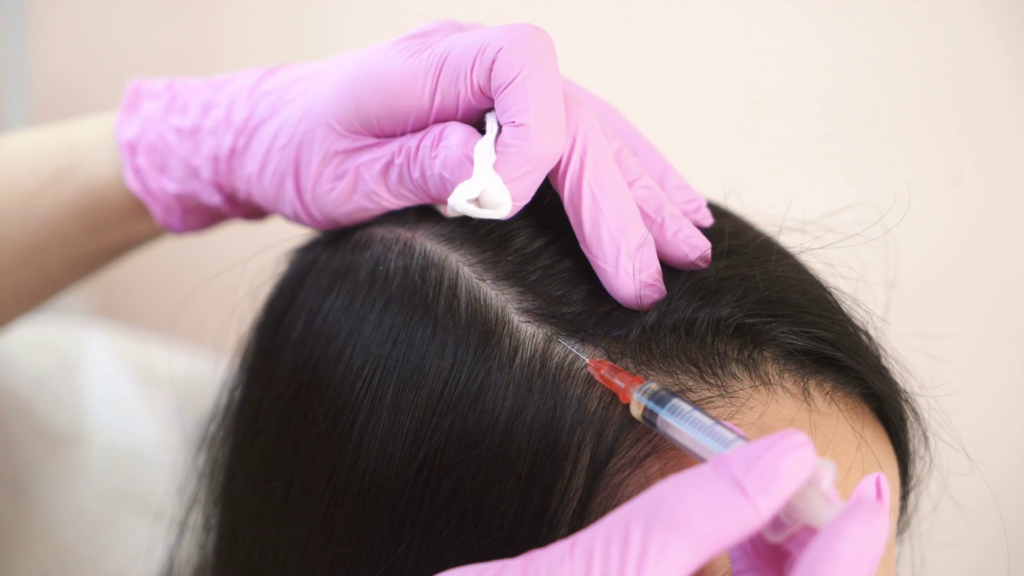For many people, hair is a big deal. It’s part of how we express ourselves. But what happens when your hair doesn’t match who you are inside? This is a challenge many transgender women face. Hair loss can be incredibly tough emotionally, especially during transition. This is where MTF transgender hair transplants come in. They’re not just about hair – they’re about feeling whole. This article will break down everything you need to know about MTF hair transplants, from the basics to the emotional journey. Let’s get started!
İçindekiler
Breaking the Mold: Hair Loss and Gender Affirmation
You often hear about hair transplants for cis men. But guess what? Hair transplants aren’t a one-size-fits-all thing! Transgender women are increasingly choosing hair transplants as part of their transition journey. It’s about aligning your outer appearance with your true self. We’re talking about feeling confident and comfortable in your own skin. MTF transgender hair transplants can be a game-changer in this journey.
Understanding Hair Transplants: The Basics
First things first, what exactly is a hair transplant? Imagine moving tiny hairs from one place to another. That’s basically it! These “hairs” are actually called follicular units. They’re like little hair families that get relocated to areas where hair is thinning.
There are two main ways to do this:
- FUT (Follicular Unit Transplantation): Think of this like a strip of sod. Surgeons take a thin strip of skin with hair follicles from the back of your head. Then, they divide this strip into individual follicular units and transplant them to the desired areas.
- FUE (Follicular Unit Extraction): This method is like plucking individual hairs, but with fancy tools. Surgeons remove individual follicular units directly from the donor area, one by one, and transplant them to the recipient area.
Both methods aim to restore hair growth in a way that looks natural and, most importantly, feels like you!
The MTF Difference: Unique Considerations for Transgender Women
Now, here’s where things get specific to MTF transgender hair transplants. While the basic techniques are the same, several factors make the MTF experience unique:
- Hormone Therapy and Hair Loss: Hormone replacement therapy (HRT) is common for transgender women. While it can help redistribute body fat and promote breast growth, it can also affect hair. Some women experience hair loss on their scalp due to hormonal changes. The good news is that HRT can actually improve the success rate of hair transplants!
- Facial Feminization Surgery (FFS) and Hairline Design: Many transgender women undergo FFS to achieve a more feminine facial structure. If you’re considering both FFS and a hair transplant, it’s crucial to coordinate with your surgeons. The hairline design should complement your new facial features and create a harmonious look.
- Choosing a Specialized Surgeon: Finding a surgeon experienced in both hair transplantation and transgender care is paramount. They’ll understand the nuances of hormone therapy, facial structure, and hairline aesthetics specific to transgender women.
Your Journey Begins: The MTF Hair Transplant Process
Ready to take the plunge? Here’s what you can expect during a typical MTF hair transplant process:
- Consultation: This is where the magic starts! You’ll discuss your hair goals, medical history, and expectations with your surgeon. They’ll examine your scalp, assess your hair loss, and recommend the best technique (FUT or FUE).
- Hairline Design: This step is crucial for achieving a natural and feminine hairline. Your surgeon will work with you to design a hairline that complements your facial structure and desired look.
- Transplantation: Whether you’re having FUT or FUE, the actual transplantation involves carefully placing the follicular units into the recipient areas. Local anesthesia ensures you’re comfortable throughout the procedure.
- Post-Operative Care: Your surgeon will provide detailed instructions on caring for your scalp after the transplant. This may include using special shampoos, avoiding strenuous activities, and sleeping in a specific position.
- Follow-Up Appointments: You’ll have follow-up appointments to monitor healing and hair growth. It’s important to attend these appointments so your surgeon can track your progress and address any concerns.
Planning for Success: Cost, Recovery & Realistic Expectations
Let’s talk about the practical stuff – cost, recovery, and expectations.
- Cost: MTF hair transplant costs can vary depending on the extent of hair loss, the chosen technique, and the surgeon’s fees. It’s essential to factor in consultation fees, procedure costs, and potential follow-up treatments.
- Recovery: Recovery time also varies but generally involves a few days of downtime. You might experience some swelling, redness, and mild discomfort, which is entirely normal. Most people return to their regular activities within a week or two.
- Realistic Expectations: Patience is key when it comes to hair transplant results. While you’ll notice new hair growth within a few months, it takes time for the transplanted hair to mature and reach its full potential. Final results can take up to a year or more.
More Than Hair: The Emotional and Social Impact
MTF transgender hair transplants are about more than just physical changes; they’re about emotional transformation. Many transgender women report a significant boost in self-esteem and confidence after their transplants. It’s about finally seeing the reflection in the mirror that matches your true identity.
However, it’s also important to acknowledge the emotional aspects of this journey. Some women may experience a mix of emotions – excitement, anticipation, anxiety, and even vulnerability. It’s crucial to have a support system in place, whether friends, family, or a therapist specializing in transgender healthcare.
Embrace Your Transformation: Finding Confidence & Support
If you’re considering an MTF transgender hair transplant, remember that you’re not alone. This is a journey many transgender women undertake as part of their transition.
Here are some resources that can provide support and information:
- The Transgender Health Program at your local hospital or medical center
- LGBTQ+ community centers
- Online forums and support groups specifically for transgender hair transplants
Don’t hesitate to reach out to these resources for guidance, advice, and a sense of community.
Hair Transplants: Are They Just for Cis Men? Tell Me More About MTF Transgender Hair Transplants!
MTF transgender hair transplants are becoming increasingly common, helping transgender women achieve their desired appearance and boost their confidence. Remember, you deserve to feel comfortable and confident in your own skin. If you’re considering a hair transplant, consult with a qualified and experienced surgeon specializing in transgender hair restoration. They can guide you through the process, address your concerns, and help you make an informed decision.
Hairtrans.com was founded by world-famous plastic surgeon Dr. MFO, who is an expert in facial feminization or facial masculinization surgeries, and is managed under his leadership. Would you like to have a hair transplant under the coordination of a plastic surgeon with many years of experience?
Whether you are a trans woman or a natural born male or female, if you are looking for the best hair transplant, contact us now.

FAQ: MTF Transgender Hair Transplants: Your Questions Answered
What are MTF Transgender Hair Transplants?
MTF transgender hair transplants are a type of hair restoration surgery specifically designed for transgender women. They involve transplanting hair follicles from one area of the scalp (usually the back or sides) to areas experiencing hair loss or thinning. The goal is to create a fuller, more feminine hairline that aligns with your gender identity.
Why are MTF Transgender Hair Transplants Different?
While the basic techniques are similar to those used for cisgender men, MTF hair transplants require a nuanced approach. Hormone replacement therapy (HRT) can influence hair growth and loss patterns, so surgeons need to factor this into their assessments. Additionally, many transgender women undergo facial feminization surgery (FFS), and the hairline design needs to complement those changes. Choosing a surgeon experienced in both hair transplantation and transgender healthcare is essential for optimal results.
How Can Hormone Therapy Affect Hair Transplants?
HRT can cause hair loss in some transgender women, but it can also improve the success rate of hair transplants. Estrogen can slow down hair loss and promote hair growth, creating a more favorable environment for transplanted follicles to thrive. Your surgeon will work with you to optimize your hormone levels before and after the procedure.
What are the Main Types of Hair Transplant Techniques?
The two primary techniques used for MTF transgender hair transplants are:
- Follicular Unit Transplantation (FUT): A thin strip of scalp containing hair follicles is removed from the back of the head. This strip is then divided into individual follicular units and transplanted to the recipient areas.
- Follicular Unit Extraction (FUE): Individual follicular units are extracted directly from the donor area using a specialized punch tool. These units are then transplanted to the recipient areas.
Your surgeon will recommend the most suitable technique based on your hair loss pattern, hair characteristics, and desired outcome.
How Much Do MTF Transgender Hair Transplants Cost?
The cost of MTF hair transplants can vary depending on factors such as the surgeon’s experience, the chosen technique, the extent of hair loss, and the geographic location of the clinic. On average, you can expect to pay between $4,000 and $15,000 or more. It’s crucial to have a consultation to receive a personalized cost estimate.
What is the Recovery Like After an MTF Transgender Hair Transplant?
Most patients experience some swelling, redness, and mild discomfort for a few days after the procedure. Your surgeon will provide specific instructions on caring for your scalp, including washing, sleeping positions, and avoiding strenuous activities. It’s typical to return to work or school within a week or two, but full recovery and hair growth can take several months.
When Will I See Results From My Hair Transplant?
It’s important to have realistic expectations about the timeline for hair growth. Transplanted hair initially enters a resting phase before it begins to grow. You’ll likely start to see new hair growth within a few months, but it can take up to a year or more for the hair to reach its full thickness and density. Patience is key!
How Can I Find a Qualified Surgeon?
Look for a surgeon who is board-certified in hair restoration surgery and has extensive experience working with transgender patients. Ask about their experience with MTF hair transplants specifically, and request to see before-and-after photos of their previous patients. Consider scheduling consultations with several surgeons to find the best fit for you.
What are the Emotional and Social Benefits of MTF Hair Transplants?
For many transgender women, hair loss can significantly impact their self-esteem and confidence. MTF transgender hair transplants can provide a sense of gender affirmation and help align their physical appearance with their true identity. It’s about feeling comfortable and confident in your own skin.
Where Can I Find Support During My Hair Transplant Journey?
Connecting with others who understand your journey can be incredibly helpful. Reach out to support groups specifically for transgender hair transplants, LGBTQ+ community centers, or online forums where you can connect with others who have undergone similar procedures. Remember, you are not alone!


